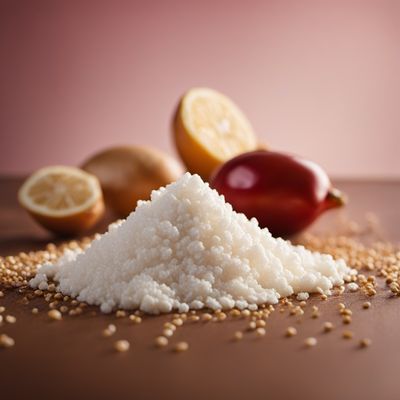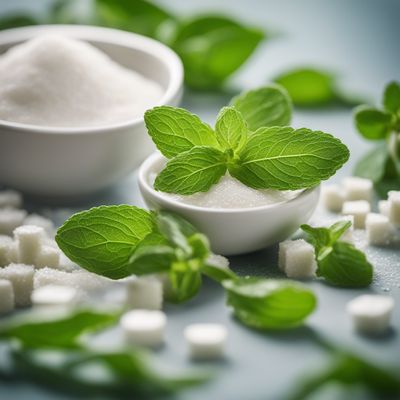
Ingredient
Acesulfame k
The Sweet Secret: Acesulfame K
Acesulfame K, also known as Acesulfame Potassium, is an artificial sweetener that is approximately 200 times sweeter than sugar. It is commonly used as a sugar substitute in a wide range of food and beverage products, including soft drinks, desserts, and baked goods. Acesulfame K offers a sweet taste without adding calories, making it a popular choice for individuals looking to reduce their sugar intake or manage their weight.
Origins and history
Acesulfame K was discovered in 1967 by a German chemist named Karl Clauss. It was approved for use as a food additive in the United States in 1988 and has since gained popularity as a sugar substitute. Acesulfame K is heat-stable, meaning it can withstand high temperatures without losing its sweetness, making it suitable for use in baking and cooking. It is widely used in the food and beverage industry as a low-calorie alternative to sugar.
Nutritional information
Acesulfame K is a calorie-free sweetener that does not contribute to the overall calorie content of food or beverages. It is also non-nutritive, meaning it does not provide any essential nutrients. Acesulfame K is considered safe for consumption by regulatory authorities, including the U.S. Food and Drug Administration (FDA) and the European Food Safety Authority (EFSA). However, it is important to note that excessive consumption of artificial sweeteners may have potential health effects, and moderation is recommended.
Allergens
There are no known allergens associated with Acesulfame K.
How to select
Acesulfame K is readily available in the form of tabletop sweeteners, as well as in a wide range of processed food and beverage products. When purchasing tabletop sweeteners, look for reputable brands and check the ingredient list to ensure Acesulfame K is included. For processed food and beverage products, read the nutrition label to identify if Acesulfame K has been used as a sweetener.
Storage recommendations
To maintain the quality of Acesulfame K, it is best to store it in a cool, dry place away from direct sunlight. Avoid exposing it to moisture, as it can cause clumping or degradation of the sweetener. Follow the manufacturer's instructions for storage recommendations, as different products may have specific requirements.
How to produce
Acesulfame K is a synthetic sweetener that is produced through a chemical process. It is not typically produced by individuals at home.
Preparation tips
Acesulfame K is primarily used as a sugar substitute in various food and beverage products. It is commonly found in diet sodas, sugar-free desserts, chewing gum, and baked goods. Acesulfame K can be used in recipes that require sweetness, but it is important to note that it may not provide the same texture or browning properties as sugar. It is often combined with other sweeteners, such as sucralose or aspartame, to achieve a more balanced taste.
Culinary uses
Acesulfame K is widely used in the food and beverage industry as a sugar substitute. It is commonly found in diet sodas, energy drinks, protein bars, sugar-free candies, and low-calorie desserts. It is also used in pharmaceutical products, such as syrups and chewable tablets, to mask the bitter taste of certain medications.
Availability
Acesulfame K is available worldwide and can be found in a wide range of food and beverage products in most countries.
More ingredients from this category

Advantame
The Sweet Sensation: Advantame

Neo-hesperidine
The Bitter-Sweet Marvel: Unveiling the Wonders of Neo-hesperidine

Neotame
The Sweet Secret: Neotame

Thaumatine
The Natural Sweetener

Aspartame
The Sweet Science: Unveiling the Secrets of Aspartame

Saccharine
"The Sweet Secret: Unveiling the World of Saccharine"

Cyclamate
The Sweet Side of Cyclamate

Steviol glucoside
The Natural Sweetener of the Future

Sucralose
The Sweet Secret